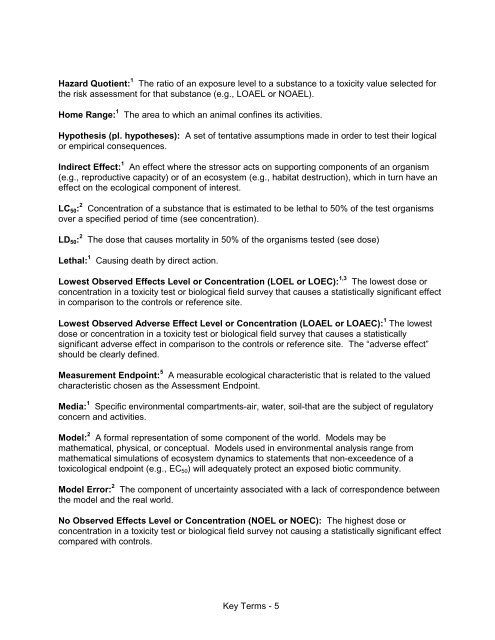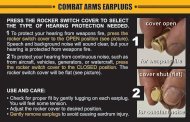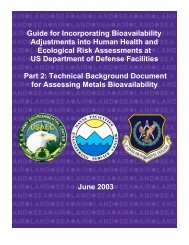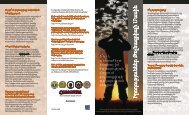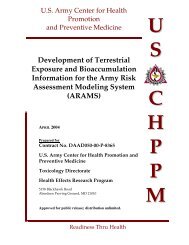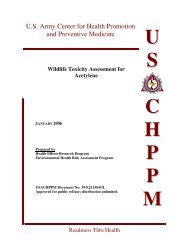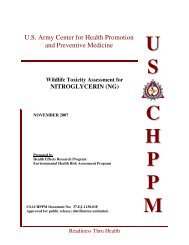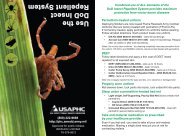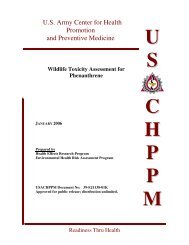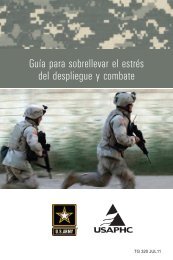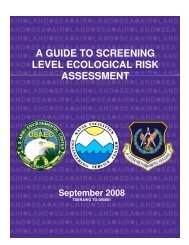Tri-Service Remedial Project Manager's Guide for Ecological Risk ...
Tri-Service Remedial Project Manager's Guide for Ecological Risk ...
Tri-Service Remedial Project Manager's Guide for Ecological Risk ...
You also want an ePaper? Increase the reach of your titles
YUMPU automatically turns print PDFs into web optimized ePapers that Google loves.
Hazard Quotient: 1 The ratio of an exposure level to a substance to a toxicity value selected <strong>for</strong>the risk assessment <strong>for</strong> that substance (e.g., LOAEL or NOAEL).Home Range: 1The area to which an animal confines its activities.Hypothesis (pl. hypotheses): A set of tentative assumptions made in order to test their logicalor empirical consequences.Indirect Effect: 1 An effect where the stressor acts on supporting components of an organism(e.g., reproductive capacity) or of an ecosystem (e.g., habitat destruction), which in turn have aneffect on the ecological component of interest.LC 50 : 2 Concentration of a substance that is estimated to be lethal to 50% of the test organismsover a specified period of time (see concentration).LD 50 : 2The dose that causes mortality in 50% of the organisms tested (see dose)Lethal: 1Causing death by direct action.Lowest Observed Effects Level or Concentration (LOEL or LOEC): 1,3 The lowest dose orconcentration in a toxicity test or biological field survey that causes a statistically significant effectin comparison to the controls or reference site.Lowest Observed Adverse Effect Level or Concentration (LOAEL or LOAEC): 1 The lowestdose or concentration in a toxicity test or biological field survey that causes a statisticallysignificant adverse effect in comparison to the controls or reference site. The “adverse effect”should be clearly defined.Measurement Endpoint: 5 A measurable ecological characteristic that is related to the valuedcharacteristic chosen as the Assessment Endpoint.Media: 1 Specific environmental compartments-air, water, soil-that are the subject of regulatoryconcern and activities.Model: 2 A <strong>for</strong>mal representation of some component of the world. Models may bemathematical, physical, or conceptual. Models used in environmental analysis range frommathematical simulations of ecosystem dynamics to statements that non-exceedence of atoxicological endpoint (e.g., EC 50 ) will adequately protect an exposed biotic community.Model Error: 2 The component of uncertainty associated with a lack of correspondence betweenthe model and the real world.No Observed Effects Level or Concentration (NOEL or NOEC): The highest dose orconcentration in a toxicity test or biological field survey not causing a statistically significant effectcompared with controls.Key Terms - 5


